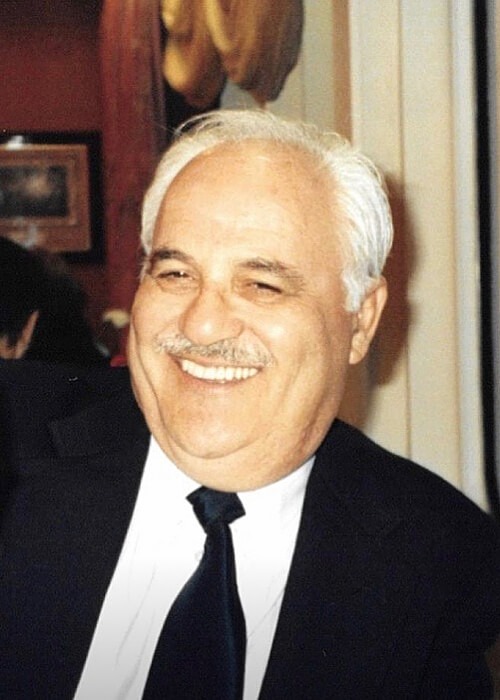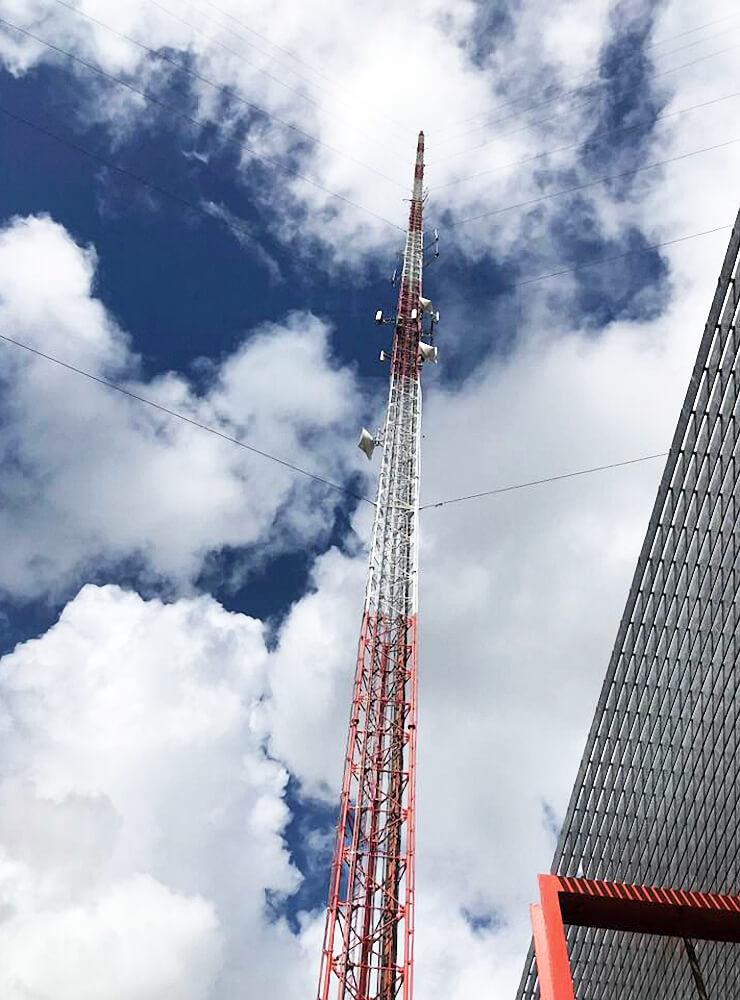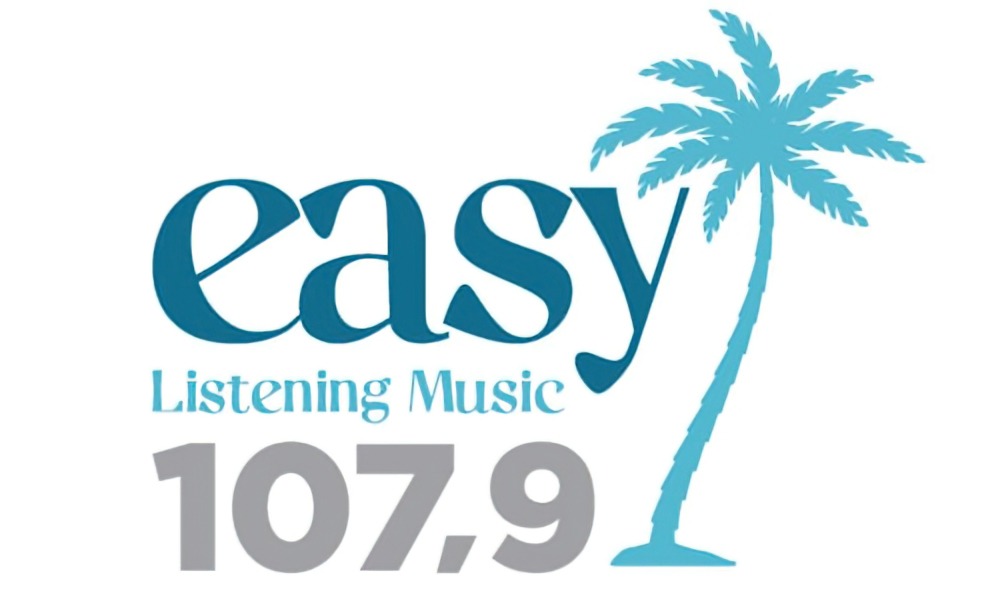Back in 2019, I wrote about a true radio broadcasting entrepreneur named Norm Alpert. We lost Norm in December of 2018, not long before my dear Alicia headed for her heavenly home. At the time, he and his family were operating WAVV (FM), serving Naples and Fort Myers, and the Southwest Florida region with an Easy Listening format.
The family, some of whom were already working at the station, chose to retain ownership; however, a year later the decision was made to transition to a soft “adult contemporary” sound –– after all, WAVV was one of the few stations remaining which were still offering the true “conservative” Easy Listening musical format.
Still, upon making the format change, they did not banish the old format completely; instead, moving it to one of the “extra” digital channels that FM stations are authorized to transmit. Unfortunately, very few receivers capable of picking up these extra channels –– whether for a vehicle or home––have been purchased.
Now, nearly two years later, a new action regarding the availability of the original format has made industry news … hence the headline and visual above. The original format can once again be heard on regular FM, via the new Easy Listening 107.9 … although the signal is not as strong and far-reaching. When you tune in you may not hear what you’re anticipating, although a station staffer has told me that the sound now being heard on 107.9 is not much different than where they’d “transitioned” to prior to being dropped from 101.1––this I cannot attest to as it’s been a number of years since I’ve heard the station
Before I go on, though, I want you to get to know the self-made man who created this enterprise … if you’ve not previously read the Norm Alpert story, take a couple of minutes to do so now –– then I’ll pick up where I just left off…
Originally posted February 28, 2019
I first met Norman R. Alpert in late 1971, when he came by our Bonneville Broadcast Consultants offices in midtown Manhattan to talk about our programming the FM station he had just purchased. While it did not reach millions of potential listeners, its signal covered one of the greatest landmasses of any FM station in North America … as it transmitted from one of the most inhospitable weather places on earth for humans or broadcast transmitters … Mount Washington, New Hampshire!
The station had begun operations in 1958, four years after its sister TV station had been launched from this remote mountaintop site. Because of the remoteness of the location, there was a backup for everything, two transmitters for the FM and TV stations, and duplicate power generators, as there was no public power source available.
While no one can remember with certainty, it’s believed that during the intervening years, WMTW-FM primarily programmed classical music. However, Norm’s plan was to air our Beautiful Music format from the minute he took over, the kind of music which was his personal favorite and he believed would become a favorite with many in northern New England.
Naturally, no programming — TV or radio — originated from Mount Washington … except for a 30-second nightly “weather on the mountain” TV report delivered by one of the two engineers always on duty up there to keep everything running. At the time Norm acquired the station, studios for both stations were in Poland Spring, Maine … yes, in an old resort hotel in this community where the Poland Spring water company was founded.

Shown here is the broadcast studio in the Poland Spring complex that Norm inherited. Note on the right of the photo a stack of blue boxes. In this early 1970’s period, the Bonneville Broadcast Consultants programming was supplied on 7″ reels of tape, two quarter-hour music segments per reel.
However, Poland Spring wasn’t a logical place to locate the business and sales offices, as it was still another 30 miles to the major population center of the region, Portland. Other than building advertising revenue, a major goal for Norm was to get the entire operation combined into one location … in Portland. After a fair amount of time and effort, a workable microwave transmission route would finally be established for getting the broadcast signal from downtown Portland to the Mountain.
Why would a first-time station buyer like Norm go for a challenging situation such as this? Consider, the transmitter was on a mountaintop that was barely accessible for two-thirds of the year and located more than 70 air-miles away from the business and sales offices … and the broadcast studios were somewhere in between. Why? Because Norm saw an opportunity! The price was right … as for the present ownership, the FM was more of a nuisance than an asset when the focus needed to be on their TV station, plus there was an opening for the station to offer the musical format he had in mind, plus the broadcast competition for securing advertising was not overwhelming.
What Norm had more than money were courage and commitment. After serving in the Army, he attended college, majoring in broadcasting and psychology. His career began with positions in sales with companies such as Colgate-Palmolive, then transitioning into broadcast sales with the national radio advertising representative firm, the Eastman Company. It was from this position in New York City that he moved to northern New England to take on the entrepreneurial role of radio station owner.
Under the new ownership, the call letters became WWMT, later WMTQ; however, in 1976, when the call letters became available, Norm changed again, this time to WHOM for “We’re High On the Mountain” … which continue to be its call letters to this day.
For anyone who lived in or visited the “north country” of Maine, New Hampshire and Vermont during this time … wherever you’d go and mention “WHOM,” someone would immediately respond, “that’s the Mount Washington station.” Of course, it was heard playing in many businesses as well.

Having devoted ten years to building WHOM into a very successful station, both in listenership and revenue, Norm was ready for a change … abandon the harsh New England weather and “retire” to a warmer clime, southwest Florida. While Bonneville’s programming would continue on WHOM for several more years, by early 1982 Norm’s company, Alpine Broadcasting, would be out of the radio business … at least temporarily.
I don’t believe this was Norm’s plan or desire, but the mother of his children made the decision to stay behind in New England rather than make the move. And, the word “retire” is not one that I ever heard from Norm directly, so it was no surprise that barely a year later he had purchased the construction permit for an FM station which had been secured by the developers of the planned community of Marco Island, Florida, the Deltona Corporation, but never built.
Having a construction permit is simply the government’s authorization to build a broadcast station — in response to an application you have filed, specifying a particular frequency or channel to serve a particular territory, showing the geographic area the signal will cover as well as who will be its owners and where the money is coming from to pay for construction.
The FCC approved Norm’s acquisition of the permit in early 1983. However, learning from his experience in New England, where he owned a station’s worth of equipment, yet having no ownership or real control over the three locations at which it operated, he planned to 1) have full ownership of his station’s buildings, transmitting tower and the land they occupied, and 2) he would maximize the station’s signal and coverage.

To accomplish this meant constructing a 1,000-foot tower on property inland, near the edge of the Everglades. For such a tall tower, he needed to acquire approximately 135 acres in a more-or-less square plot — which would not be easy. If I remember correctly, Norm told me there were something like two dozen different property owners involved, and most were not local. Also, the purchases needed to be made through surrogates, so no one would see the “big picture” and hold out for an exorbitant price.
At the same time, he purchased land and constructed the building which houses the broadcast studios and business offices, which is designed to look more like a regular home than a commercial structure.
For those heading southeast out of Naples along the U. S. Route 41/Tamiami Trail toward Miami, one passes this landmark, standing out front of the WAVV studios and offices building. Many likely see this as simply a concrete marker. Yet it’s a tower with a purpose … up at the top in the open window area, sits the microwave antenna that sends the WAVV signals to the transmitting tower, which is about a dozen miles to the northeast.

Nearly four years would pass before construction would be completed, especially the tower project, with actual broadcasting just beginning in June of 1987. As Norm’s favorite format of “beautiful music” was already being offered in the market, WAVV took to the air with a soft adult-contemporary sound. However, when the competitor changed direction in December of 1992, there was no hesitation on Norm’s part … WAVV brought Bonneville’s instrumentally-based easy listening format to southwest Florida and the station has been the dominant radio signal in the market ever since. Even now, some 25 years later, audience listening surveys continue to show WAVV in a leadership position.
When I visited with Norm in the later 1990s, he shared two stories with me. First, after the format shift to easy listening and the audience ratings took off, he could easily have had just one sales representative and filled all commercial slots with real estate and car dealer ads; yet, keeping listener satisfaction as a top priority, the station set limits on how many commercials they’d schedule per day in each of these categories.
Secondly, in the early ’90s, when the station needed a new bookkeeper, a young lady named Donna applied for the position. Once she demonstrated she knew her numbers and how to make them “add up,” she was hired. However, it wasn’t long before Norm realized that his eyes saw her as a very special number and, in 1995, the two were married.
Twenty-three years later, with Donna and family members at his side, Norman R. Alpert passed away this past December 3rd at age 89. As for WAVV, it’s anticipated the station will continue to be independently owned, as several Alpert family members are or have been involved in its management and operation, including son-in-law Kenny Lamb, who’s been the station’s program director since its earliest days.
Whether “high on the mountain” or down by the water, Norman R. Alpert is remembered as a consummate broadcaster … committed to serving the best interests of his stations listeners and their “community.”
Over the years many have come to use the terms Beautiful Music and Easy Listening interchangeably; however, when defining WAVV’s Easy Listening 107.9 we’re not talking in that realm. A duplicate of SiriusXM’s Escape channel it is not! Overall, what the station is offering can be called an “eclectic mix of selections” divided almost evenly 50/50 vocal vs. instrumental, at least during the three hours that I’ve just listened to.
At times, a Smooth Jazz definition would fit, other times it’s more of a cabaret/lounge music feeling. Understand, I’m not being critical here … I’m defining what I’m hearing. A good percentage of the instrumentals being played by familiar artist names would fit well on Escape; in fact, quite a few are there and have been for years.
Quite frankly, I am not really uncomfortable or have a dislike for the mix –– but can’t say it’d be my preferred choice for long-hour listening. From an old male listener standpoint, I likely would enjoy the overall sound a little more if some of the vocals which fall heavily in the jazz/swing/cabaret category were replaced by a Johnny Mathis, Tony Bennett, Streisand or Engelbert Humperdinck track. Yet, in my span of listening, I did hear tunes by Anne Murray, Sinatra, Matt Monro, the Carpenters, even Perry Como.
As a professional programmer, having been out of the business now for an extended number of years, I could not make a judgment or recommendation regarding anything to change –– at this point, I would have to be in the market, at the station, in tune with the body of listeners for a period of time to get a solid feel for what brings them joy … the way I programmed from my beginnings, now spanning nearly 50 years. You start at a point that you think makes sense, then fine-tune as you go!
If you live within range of the signal or choose to tune in via OnLine which you can now do, I would love to have you write and give us your reaction and what you like or don’t care for, and what you’d change.
Get comfortable, tune in and then let me hear from you! I’ll even pass your comments along to the Alpert family. Thank you.
Image Credits: Poland Spring studio photo, courtesy Greg Katkowski Collection



Love this story – since Jack and I spent over 40 years buying media time and being involved as agencies of record for numerous radio and television broadcast entities across the U.S., including the Gulf Broadcast Group in St. Petersburg/Tampa (WTSP) and Cosmos Broadcast Group in Columbia, SC (WIS), we have some interesting stories to tell. Ask us about working for WLOS in Asheville, NC, whose broadcast towers are located on top of Mt. Pisgah in the Blue Ridge mountains! We hiked up there a couple of times, but the regular route was on a cog-wheel train!
Thank you, Debbie … glad you enjoyed. There are so many interesting stories that people have experienced and are able to tell. However, too many of them never get written down. As my friends at the Broadcast Pioneers of Philadelphia like to say … history is only what gets preserved.
Amazing! I read your latest item just as I went on vacation to Florida from Iowa. Guess what I stumbled onto……WAVV! They still follow the same format clock. Break on the quarter hour with two units per break. I could just tell from listening to ads it was local owned. Sure enough it’s still in the family and doing very well. So what’s all this talk about “easy listening” coming back. It’s still here. By the way the the other guy is corporate owned, automated, over processed and commercials strident. Guess who’s the big winner?
Never lost my love for "easy listening," Anyone remember Tiffany Jones? Late '60 when this was station WMTW>
The only woman in broadcasting who did not overdo the talk! Would love to hear that voice again. Anyone have any tapes?
Thank you for sharing your passion in preserving the history of your vast experiences in radio. I miss the Easy Listening/Beautiful Music period, perhaps because of my brief experience with WUFM in Utica, NY, which had a Beatiful Music format in the 1960's.
I tried WAVV, but for the short period of listening– it is not for me. I'll try again later.
I listen to Jib-on-the Web, The 1920's Radio Network WHRO-HD3, Seeberg 1000, Insrumental Hits Radio, The 1940's UK Radio Station,…(all on Streema). Also– much is available on YouTube (Mantovani, Frank De Vol, Frank Chacksfield, Percy Faith… and WTFM programs from the 1960's!
As someone who has sampled this station, I find that since there are selections played from a wide choice of genres, the transitions from one to the next can be abrupt and jarring and those transitions (or segues) are quite tight like a "pop" station would present. Individually, what Easy 107.9 offers is a mix of "adult" music, but as a whole, the offerings are too broad and it wouldn't take long for the listener to hear something they don't like. Additionally, and totally my uneducated notion is that incorporating jazz into any mix of music on commercial radio, spells doom.